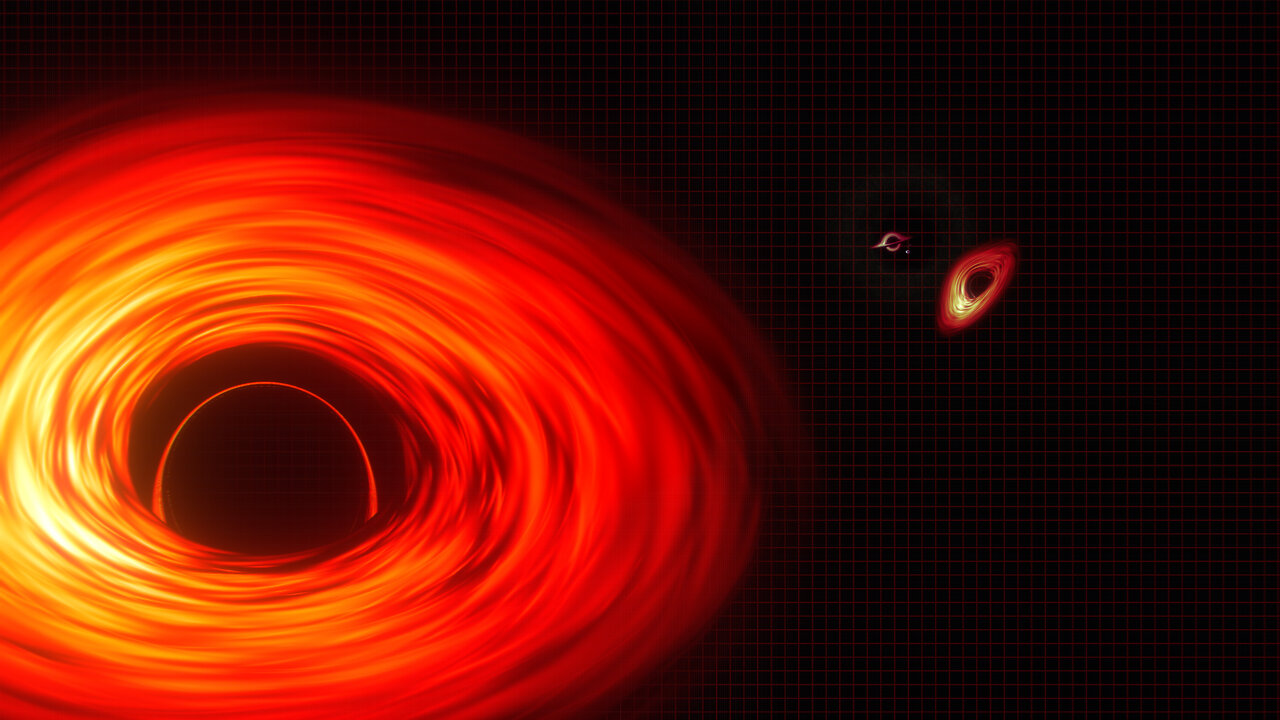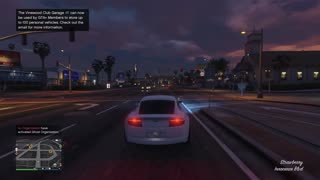Premium Only Content

AI Finds The Size Of Biggest Black Hole
Editor's Note: A previous version of this video mislabeled
the orbit of Saturn as the orbit of Jupiter.
This new NASA animation highlights the "super" in
supermassive black holes. These monsters lurk in the
centers of most big galaxies, including our own Milky Way,
and contain between 100,000 and tens of billions of times
more mnass than our Sun.
Any light crossing the event horizon - the black hole's
point of no return - becomes trapped forever, and any
light passing close to it is redirected by the black hole's
intense gravity. Together, these effects produce a
"shadow" about twice the size of the black hole's actual
event horizon.
The animation shows 10 supersized black holes that
occupy center stage in their host galaxies, including the
Milky Way and M87, scaled by the sizes of their shadows.
Starting near the Sun, the camera steadily pulls back to
compare ever-larger black holes to different structures in
our solar system.
First up is 1601+3113, a dwarf galaxy hosting a black hole
packed with the mass of 100,000 Suns. The matter is so
compressed that even the black hole's shadow is smaller
than our Sun.
The black hole at the heart of our own galaxy, called
Sagittarius A* (pronounced ay-star), boasts the weight of
4.3 million Suns based on long-term tracking of stars in
orbit around it. It's shadow diameter spans about half that
of Mercury's orbit in our solar system.
The animation shows two monster black holes in the
galaxy known as NGC 7727. Located about 1,600
light-years apart, one weighs 6 million solar masses and
the other more than 150 million Suns. Astronomers saythe pair will merge within the next 250 million years.
At the animation's larger scale lies M87's black hole, now
with a updated mass of 5.4 billion Suns. Its shadow is so
big that even a beam of light - traveling at 670 million
mph (1 billion kph) - would take about two and a half days
to cross it.
The movie ends with TON 618, one of a handful of
extremely distant and massive black holes for which
astronomers have direct measurements. This behemoth
Contains more than 60 billion solar masses, and it boasts
a shadow so large that a beam of light would take weeks
to traverse it.
Music credit: "In the Stars" from Universal Production
Music
Credit: NASA's Goddard Space Flight Center Conceptual
Image Lab
Lead Producer: Scott Wiessinger (KBRwyle)
Lead Animator: Krystofer Kim (KBRwyle)
Lead Science writer: Francis Reddy (University of Maryland
College Park)
Visualizer: Jeremy Schnittman (NASA/GSFC)
Producer: Sophia Roberts (AIMM)
Scientist: Jeremy Schnittman (NASA/GSFC)
-
 LIVE
LIVE
Colion Noir
9 hours agoCalifornia Just Banned All Glocks
340 watching -

The Charlie Kirk Show
2 hours agoTPUSA Presents This is The Turning Point Tour LIVE with Megyn Kelly and Governor Glenn Youngkin!!
162K41 -
 LIVE
LIVE
SpartakusLIVE
4 hours ago#1 Challenge CHAMPION of WZ || Ridin' The GRAVY Train w/ GloryJean
351 watching -
 LIVE
LIVE
The Jimmy Dore Show
1 hour agoNew Footage Shows Charlie Kirk Shot FROM BEHIND! Google ADMITS To COVID Censorship! w/John Kiriakou
8,493 watching -
 LIVE
LIVE
Badlands Media
18 hours agoAltered State S3 Ep. 47
526 watching -
 LIVE
LIVE
putther
1 hour ago⭐ Bounty Hunting on GTA⭐
87 watching -
 58:58
58:58
MattMorseTV
2 hours ago $2.57 earned🔴This NEW INFO changes EVERYTHING.🔴
9.66K15 -
![[MnK] Nighttime Duos w/ Spartakus 🔥 6.7 K/D](https://1a-1791.com/video/fww1/59/s8/1/C/e/8/k/Ce8kz.0kob-small-MnK-Nighttime-Duos-w-Sparta.jpg) LIVE
LIVE
GloryJean
2 hours ago[MnK] Nighttime Duos w/ Spartakus 🔥 6.7 K/D
150 watching -
 LIVE
LIVE
CharleyHornsePlays Gaming & Entertainment
1 hour ago🔴CHP GAMING | Diablo 4 Season 10 Sorcerer
26 watching -
 LIVE
LIVE
LFA TV
21 hours agoBREAKING NEWS: SHOOTER IN DALLAS! | WEDNESDAY 9/24/25
829 watching